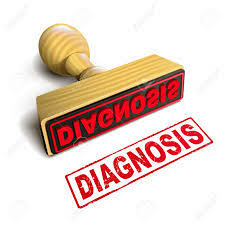 Editor’s Note:
Editor’s Note:Before we start – have you completed your PRP Patient Profile yet? Go directly to: https://conta.cc/2IOBEUA or learn why your PRP patient profile is so important.
There have been two recent questions, each embedded in an unrelated post. PRP Facebookers: Leith W (Queensland, Australia) and Marilyn C (Irvington, AL) asked:
How do I find out what type I am?
The obvious answer: Ask your dermatologist. Well, Leith asked his dermatologist, “What type of PRP I have? Do I have the one that lasts three years or 20 years?” The dermatologist responded,
“! will tell you in 20 years.”
Leith’s dermatologist wasn’t being dismissive or flippant. She was being honest.
In his Dowling Oration (circa 2003), Dr. Andrew Griffiths introduced five classifications of PRP to members of the British Association of Dermatologists. He based his classifications on two age-specific categories: Adult Onset versus Juvenile Onset. As a PRP patient (age 66 at onset) I made four personal observations.
1. According to Griffiths, 55% of all PRP patients have onset as adults. Based on a prevalence rate of one in 400,000, that translates to 817 PRP patients in the US. However, according to over 1,000 PRP patient profiles in the PRP Community Database, the occurrence by age is more like 80% versus 20%. Have you completed your PRP Patient Profile yet? Go to: https://conta.cc/2IOBEUA
2. My dermatologist has never referred to my diagnosis as Classical Type 1 or Atypical Type 2. Moreover, my medical record lists my diagnosis as “ICD 10 L44.0”. There is no reference to any sub classifications: Classical (Type 1) or Atypical (Type 2).
3. The treatment options for both Type 1 and Type 2 are the same. IMHO – the sub classification of Type 1 versus Type 2 is a distinction without a difference.
4. Based on the “sharings”of a thousand PRP patients worldwide, the duration of PRP – from onset to remission may not best represented by the 3-5 year estimate. No healthcare professional has ever queried the PRP Community as to the duration of PRP. That’s why we are confirming Onset Date and Current Status to expand the sampling. Have you completed your PRP Patient Profile yet? Go to: https://conta.cc/2IOBEU
Other relevant links…
❏½ PRP Survival Guide, Chapter 2 – Diagnosing PRP Index: LEARN MORE
❏½ ICD Coding for Rare Diseases: LEARN MORE
❏½ Dowling Oration: LEARN MORE
